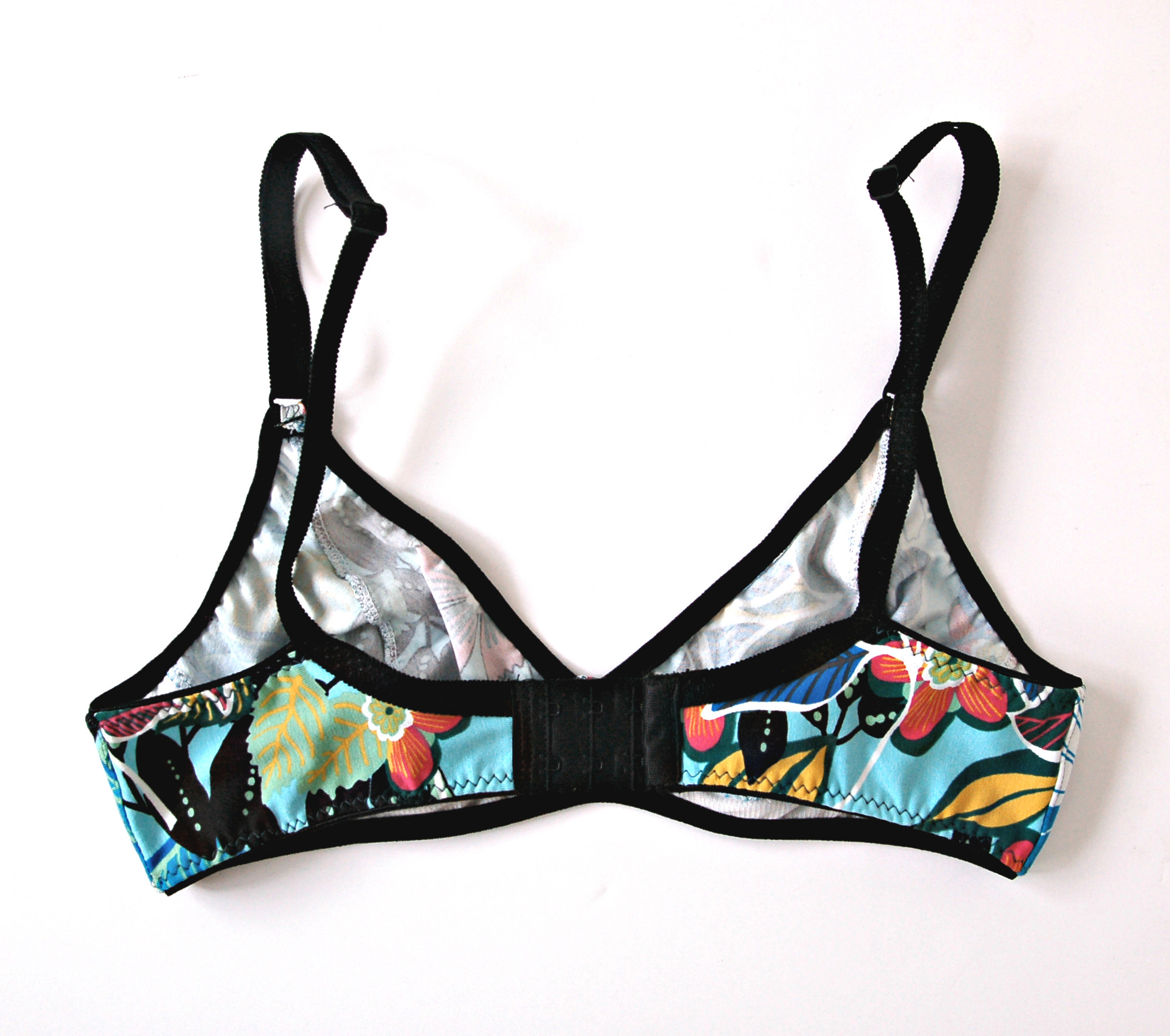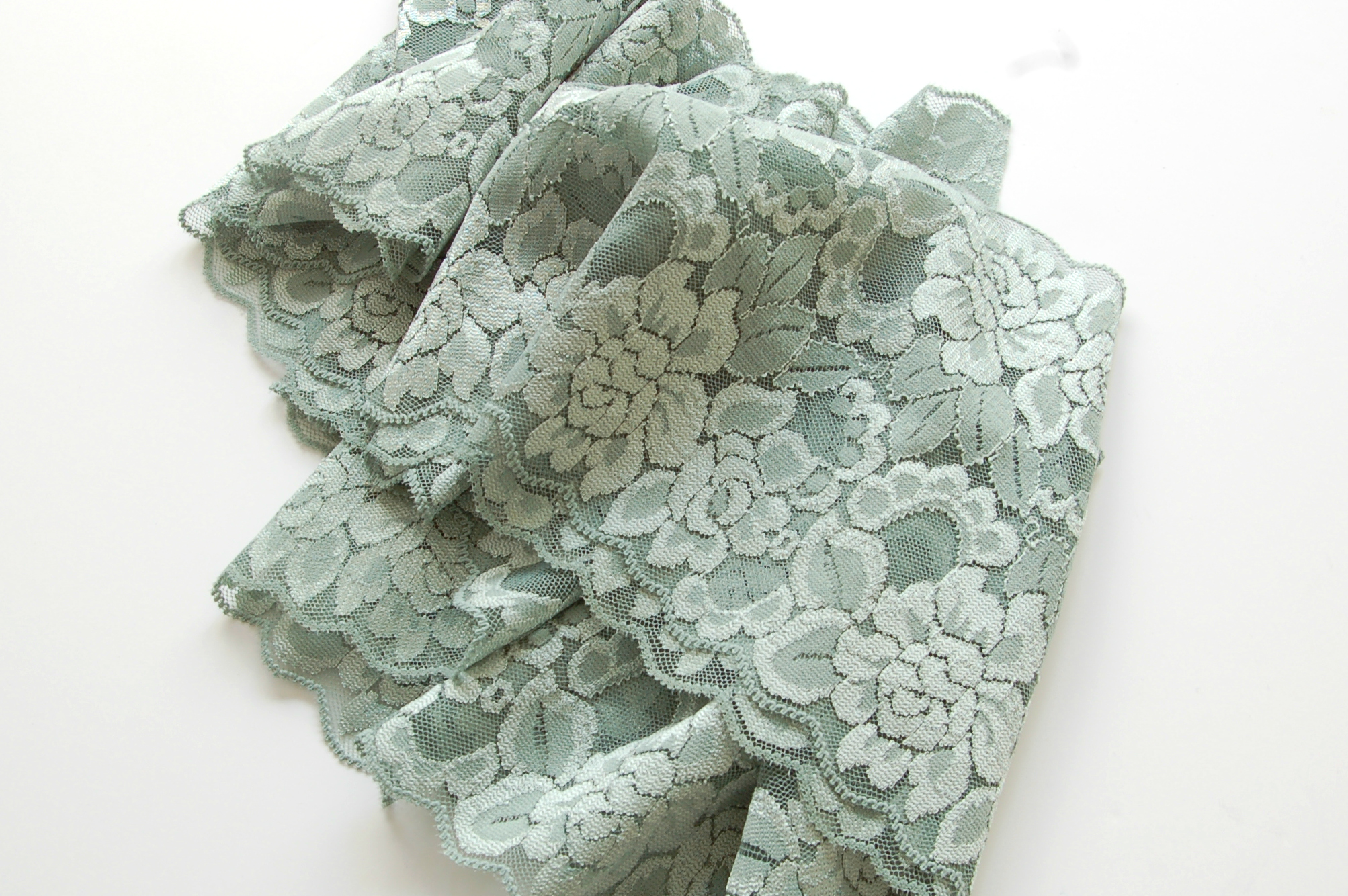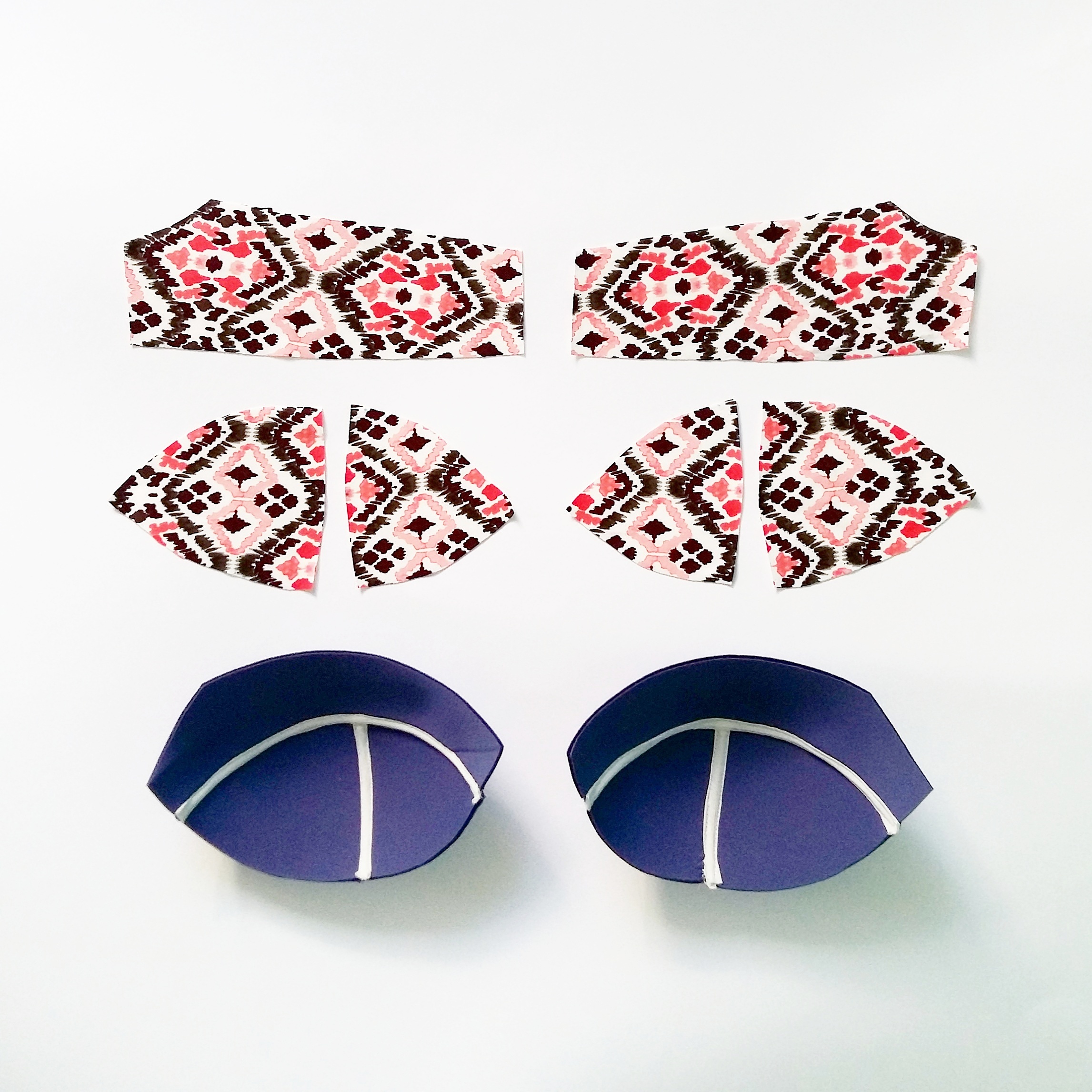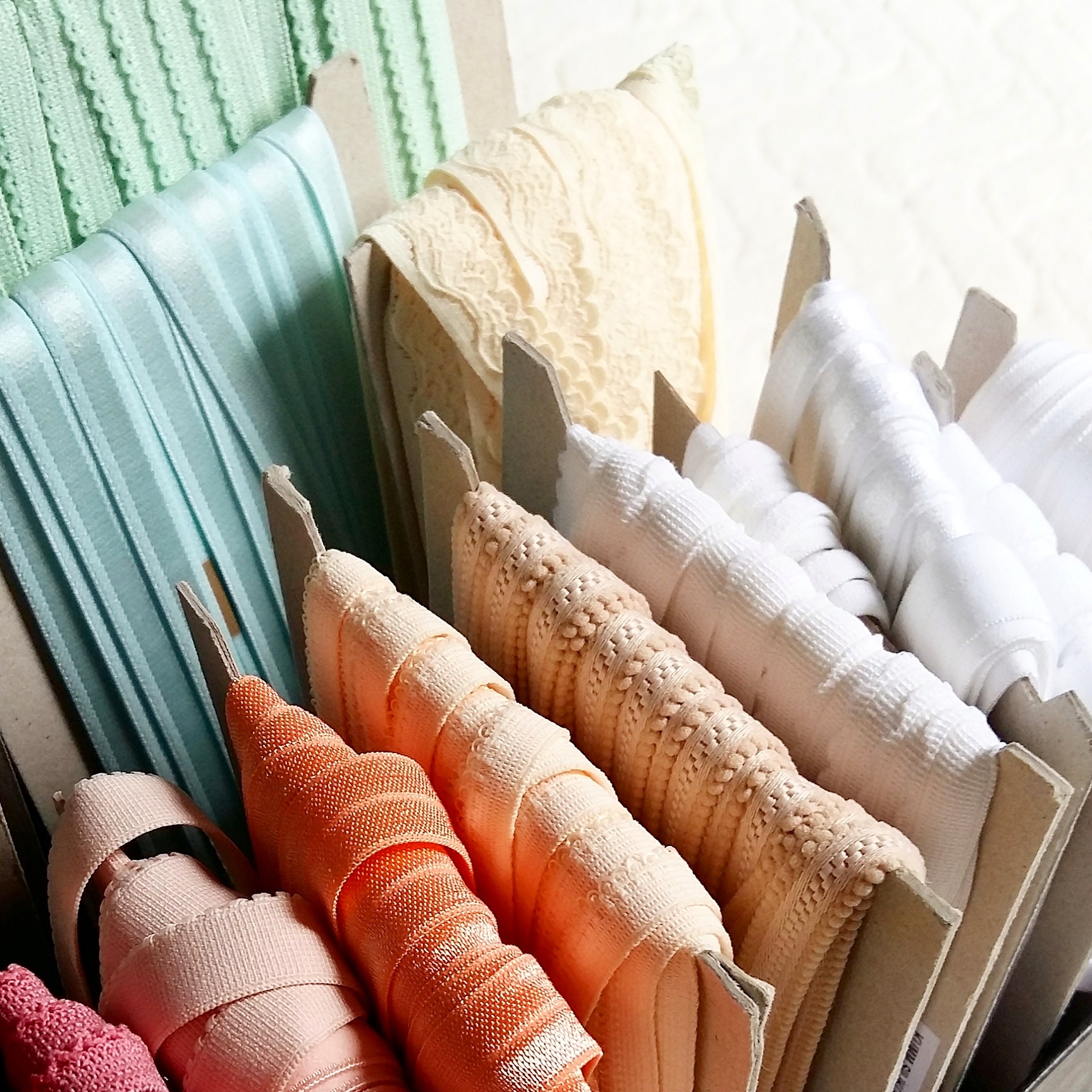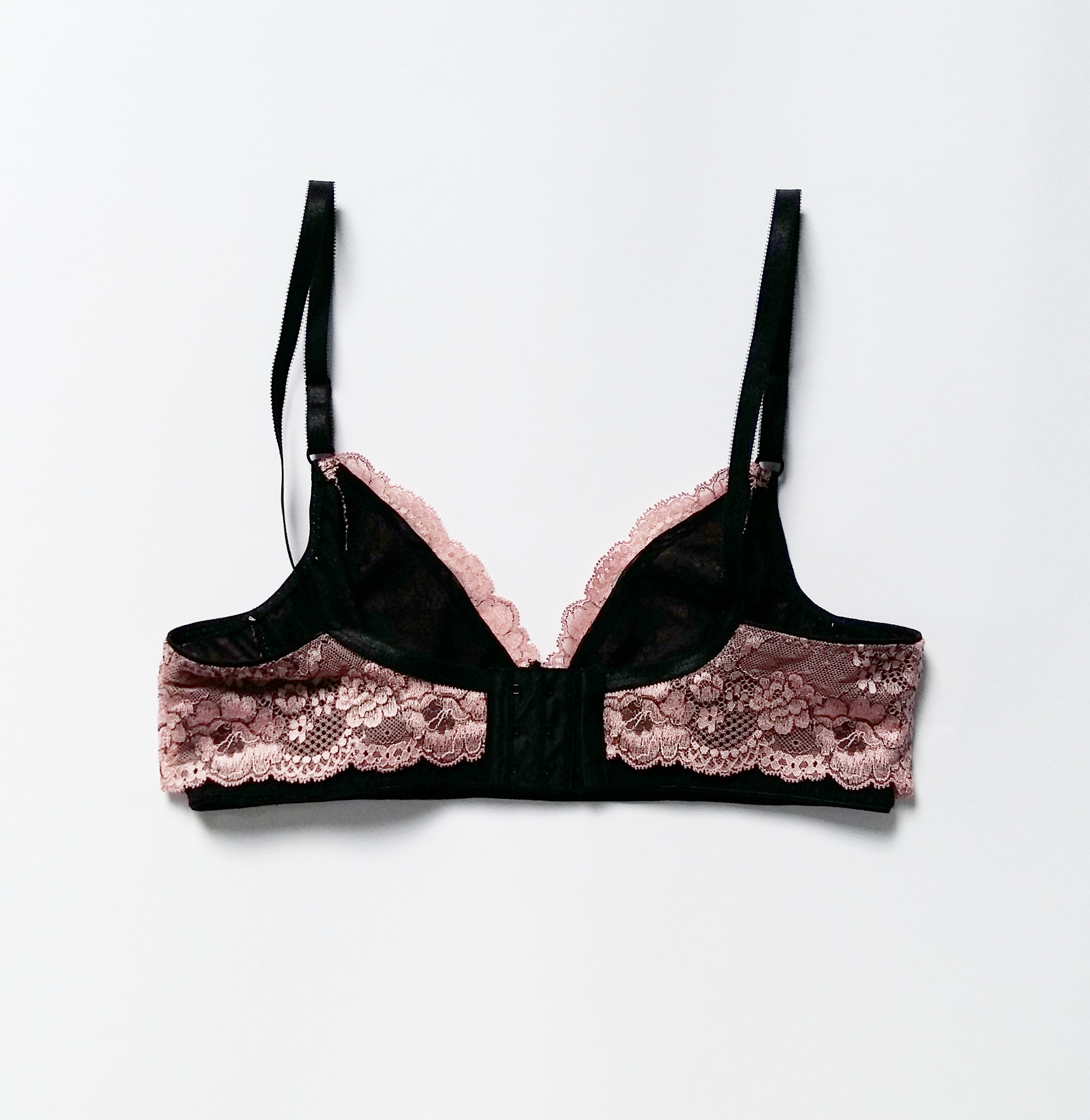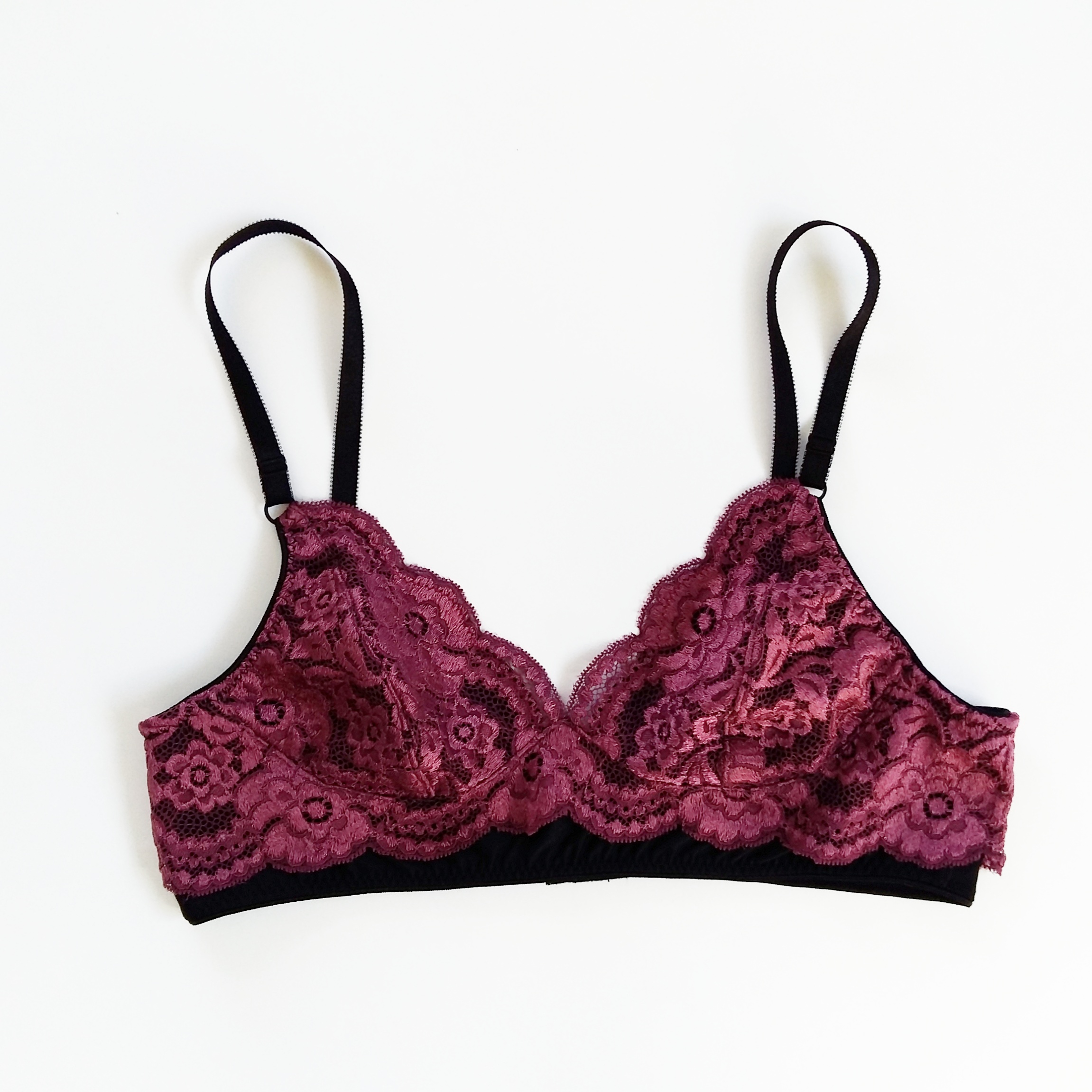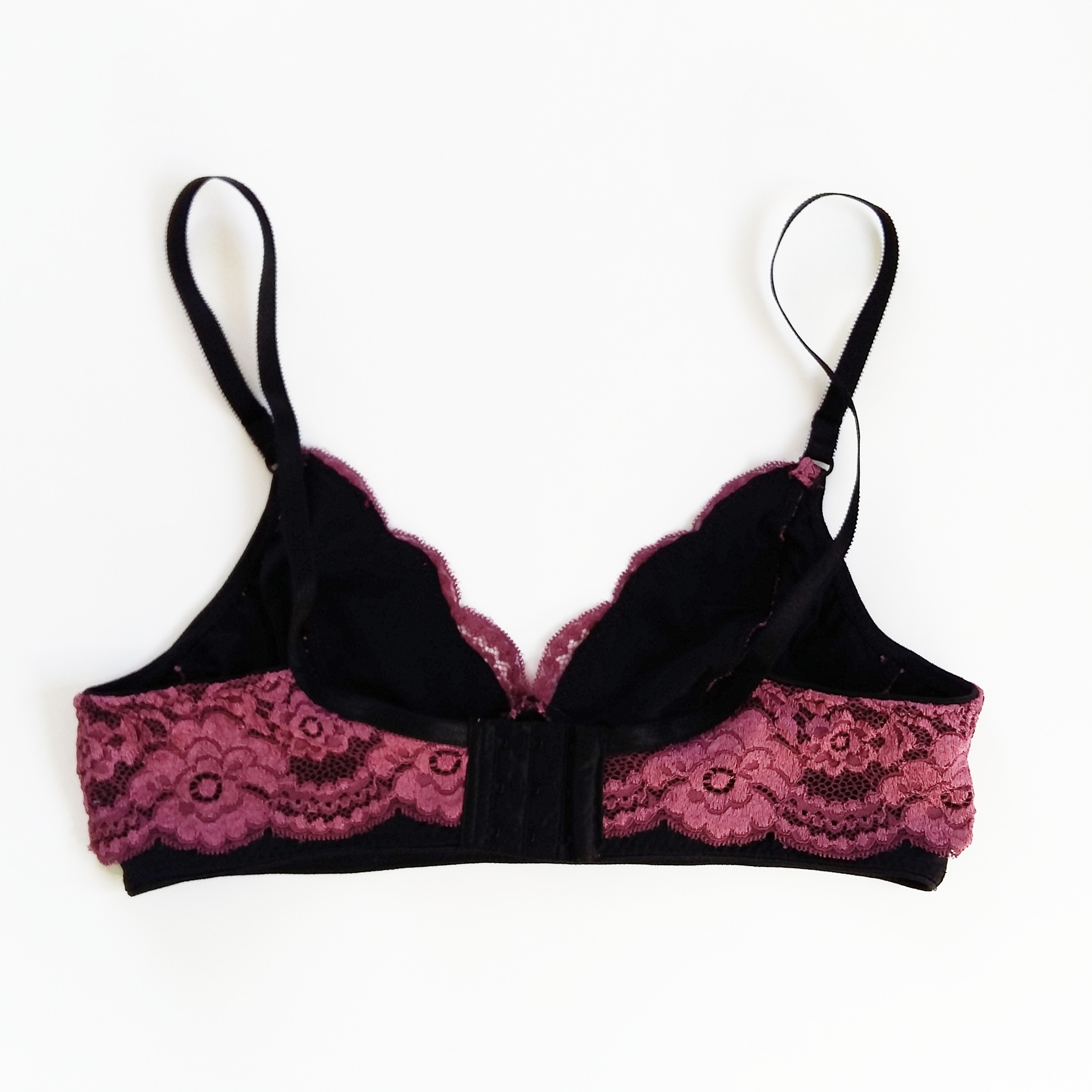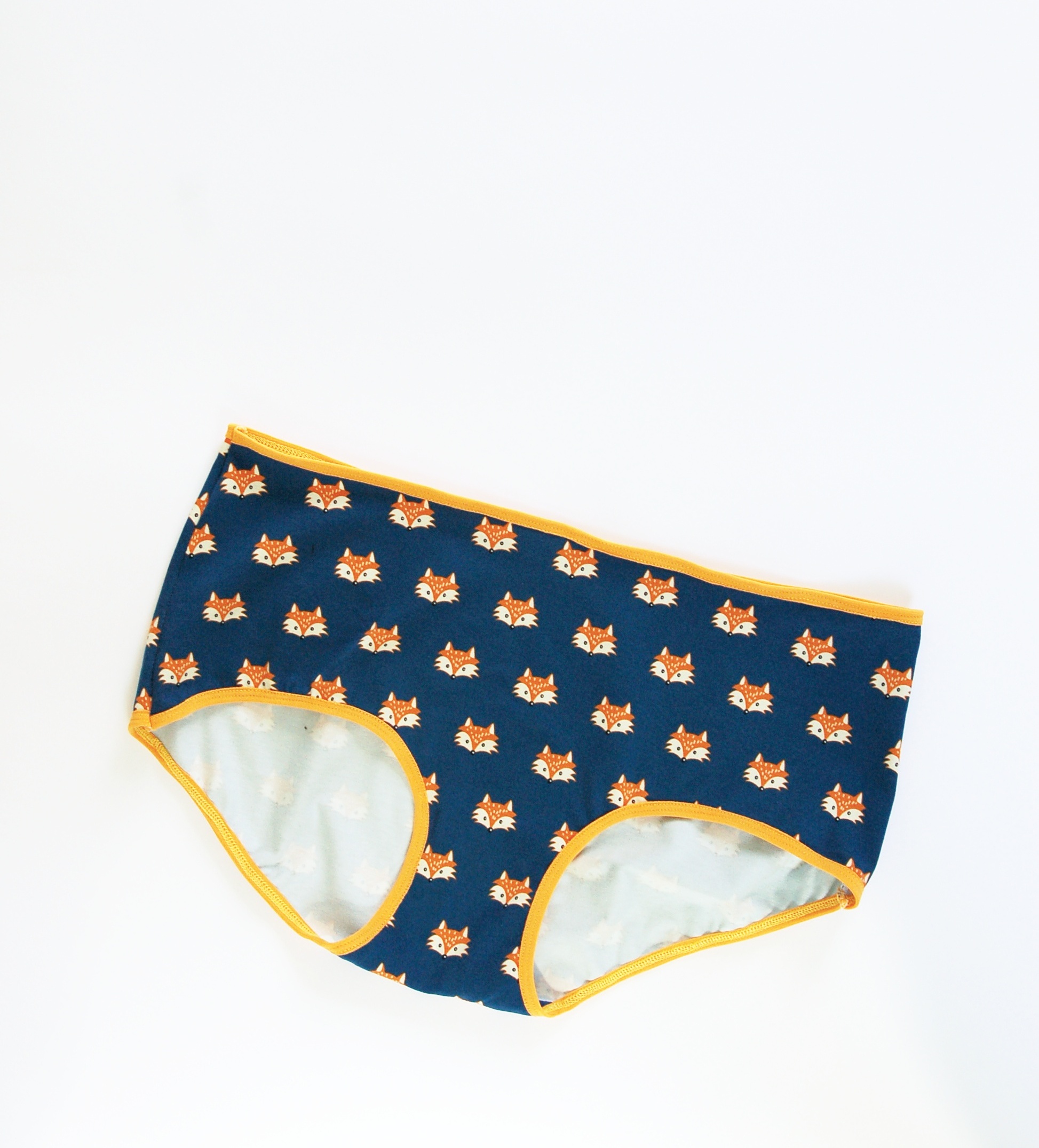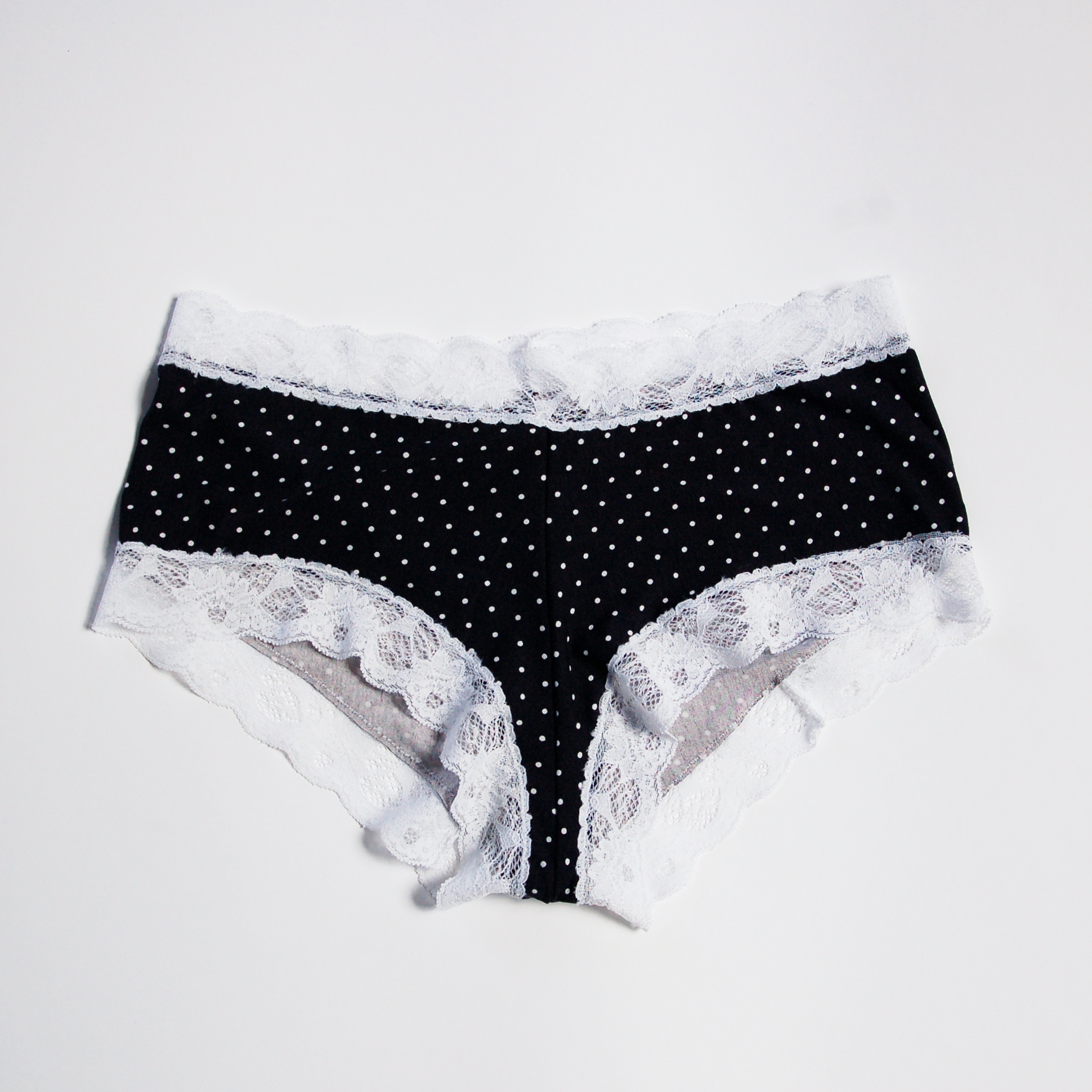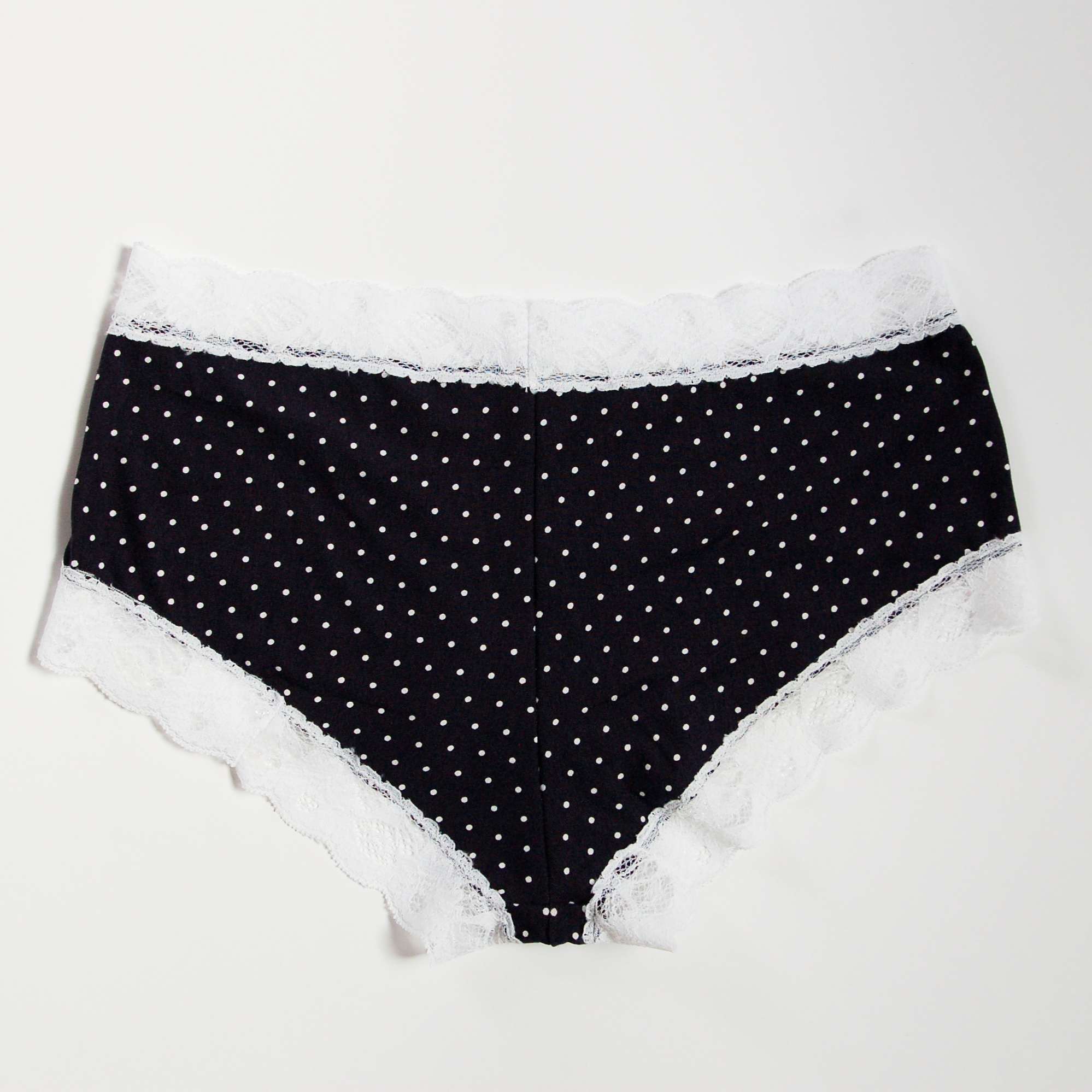Hola, hoy algunas cosas nuevas y unos consejos a la hora de elegir telas para los sujetadores. Primero vamos con el nuevo Watson de Cloth Habit. Esta vez lo cosí con punto de algodón con elastán porque me enamoré de este estampado floral, al principio comprado para los leggings de la niña, jaja. El cenntro está forrado con sheer nylon y los costados con stretch mesh. Me encanta como ha quedado, es de verano total y muy cómodo. Ya he escrito sobre este patrón antes, así que no tengo mucho más que contar y sólo voy a poner las fotos.
Hey, today I'll show you some new things and also some advice on how to choose bramaking fabrics. First the new Watson bra from Cloth Habit. This time I sewed it up with a cotton/spandex knit because I fell in love with this floral print originally bought for my girls leggings, hehe. The cradle and the bridge are lined with sheer nylon and the band with stretch mesh.I love how it turned out, it has a total summer look and it's so comfortable. I already wrote about this pattern so there's not so much more to tell so I'll just put some pictures.
Aprovecho este post para contar un poco sobre mi experiencia con las telas para coser sujetadores ya que me lo habéis preguntado a la hora de comprar los kits en la tienda de Etsy.
I'm going to use this post also to tell you a bit about my experience with bramaking fabrics because you've been asking about this when buying the btramaking kits on my Etsy shop.
Las copas
Lo primero y lo más importante es saber qué patrón, o sea qué estilo, vas a coser. Podemos dividirlos más o menos en dos:
Sujetadores sin soporte de los aros o sujetadores "blandos"
El Watson de arriba está en esa categoría. Sus copas están pensados para telas con elasticidad. Eso significa que puedes usar telas de punto, lycras e incluso algunas telas planas con elastán, sólo tienes que fijar cuánta elasticidad tiene que tener la tela, eso te lo dice tu patrón. En las instrucción de Watson se recomienda usar tela de punto con aprox 75% de elasticidad (eso significa que si estiras tu muestra de tela con ancho de 10 cm, llegará a tener el ancho de 17,5 cm).
Sujetadores con aros
El Boylston es un patrón de este tipo. En las copas necesita una tela que no tenga movimiento. Puedes usar puntos sin elasticidad, telas planas también. Sin embargo, no se aconseja usar telas planas de 100% algodón, porque las prendas "pegan" a esa tela una vez que tienes el sujetador puesto. Yo por ejemplo aquí usé una tela de poliéster fina y sin problemas. Si usas foam para hacer tus copas, puedes también usar tela de punto o tela plana con elasticidad porque la copa ya está estable gracias al foam.
the cups
The first and the most important thing is to know which pattern and which style you are going to sew. They could be divided in two main sections:
Bras without wires or also soft bras
The Watson bra is in this section. It's cups are meant to be made in stretchy fabrics. This means you can use knits, lycras and maybe even stretchy woven fabrics with spandex in them, the important thing is to know how much of the stretch your pattern is calling for. In the Watson bra instructions it's recommended to use stretch knit fabrics with aprox 75% of stretch in them (this means that if you pull a fabric sample with 10 cm of lenght it should measure 17,5 cm when stretched)
Bras with wires, classic bras
Boylston is this kind of bra pattern. In the cups it needs low to no movement fabric. You could use no stretch knit fabrics (for example Duoplex) or woven fabrics too. It's not recommended to use 100% cotton fabrics because garments tend to "stick" to this fabric when you wear your bra. I used for example a polyester woven fabric for this bra and I had no problems. If you use cut and sew foam for your bra cups, you can use a variety of stretch fabrics to cover it because the foam already is stable.
La parte central y alrededor de las copas
Esta parte tiene que tener estabilidad y por eso normalmente lleva bajo la tela exterior un forro. Tiene nombres diferentes como 15 denier o tricot lining, allí lo importante es que no tenga elasticidad y que sea fino. Yo he usado este tipo de tela en mis sujetadores y la tela que tengo, tiene elasticidad en una dirección, pero en la otra no. Es justo la otra dirección que tienes que usar para dar la estabilidad. Mirando el sujetador, donde no quieres que se muevan las cosas, o sea, en horizontal, tienes que poner la dirección sin elasticidad. En el caso de no estabilizar esa zona, puedes tener el problema de que las copas quieren ir por su camino ya que nada les da apoyo desde abajo.
También está la posibilidad de estabilizar esa parte del sujetador con entretela de punto, lo que hay que ver, es a cuánto tienes que planchar la entretela y si tu tela exterior soporta eso (ya que se usa mucho telas tipo lycra que no son muy fans de calor de la plancha). Si coses un sujetador como Boylston y lo haces con tela que no tenga elasticidad, puedes usarlo sin más, aunque yo he optado por forrarlo igual.
bridge and cradle
The central part of the bra has to be stable and that's why it usually has a lining underneath the exterior fabric. It's called by different names such as tricot lining or 15 denier, the important thing here is that it shouldn't have stretch and it should be quite lightweight. I've use this kind of fabric to line my bras and the one I have has stretch to one direction and no stretch to the other one. The direction without stretch is exactly the one that gives the stability. When observing the bra you have to put the no stretch direction where you don't want the things to move, and that is the horizontal direction. If this zone is not stable the cups might move to the sides because nothing is supporting them from the bottom.
There's also the possibility to stabilize this zone using knit interfacing, it's important to check first if your fabric tolerates the heat of the iron needed for the particular interfacing (considering the fact that a lot of times the fabrics used are lycra and other synthetics which are not big fans of iron). If you sew your bra like Boylston from a woven fabric you can probably go without interfacing as it's stable already but I added some to mine anyway.
Los costados/la banda
Según las instrucciones de Watson, se recomienda powernet/powermesh de elasticidad de 30-40%. Yo he usado stretch mesh y me ha ido bien, también es que no necesito mucho soporte. Qué es la diferencia entre los dos? Pues el powermesh y stretch mesh son las dos telas tipo red que seguramente te suenan de tus sujetadores comprados en la tienda. Powermesh es más fuerte y estira menos, stretch mesh es más fino y tiene más elasticidad.
Ahora, tienes que elegir la tela según tus necesidades, o sea, según tu talla. Tienes la opción de usar también dos capas de stretch mesh o una capa de tela de punto con una capa de stretch mesh, si no tienes powermesh pero quieres más soporte. Lo importante es que esta parte del sujetador sí que tiene que dar de sí, si no, va a ser muy incómodo. Piensa que el costado tiene que estirar 30-40% y prueba con diferentes (combinaciones) de telas para conseguir más o menos este resultado. Otro consejo con telas que se mueven más sería hacer el costado una talla más pequeña (reduces el largo que luego tu tela lo va a compensar). Según el otro patrón que he cosido por aquí, el Boylston, el costado debería tener 50% de elasticidad, así que siempre mira cuánto te pide tu patrón.
band
According to Watsons instructions it recommends a powernet/powermesh with 30-40% stretch. I used stretch mesh and it was fine, I also don't need so much support. What's the difference between the two of them? The powermesh and stretch mesh both are net like fabrics which you probably recognize from your ready to wear bras. Powermesh is stronger and less stretchier, stretch mesh is lighter and has more stretch.
You'll have to choose according to your needs and your size. You have also the option to use two layers of stretch mesh or a knit layer and stretch mesh layer if you don't have powermesh in hand. The important thing is that the band of the bra has to stretch in order to be comfortable. Think that the band needs to stretch 30-40% and try different fabric combinations to get the right amount. Another way would be using a smaller band size when working with stretchier fabrics (when reducing the band lenght your fabric compensates the stretch). The other pattern I used, Boylson, asks for 50% stretch on the band so you really have to read your instructions to get it right.
Para leer más sobre los materiales en sujetadores:
Cloth Habit: esta y esta entrada tienen mucha información
Orange Lingerie: este post
Curvy Sewing Collective: consejos especialmente para tallas más grandes
To read more about materials for bramaking check out these posts:
Cloth Habit: this and this post have a lot of information
Orange Lingerie: this post
Curvy Sewing Collective: advice specialized on bigger sizes
A todo eso, unos consejos a la hora de elegir tu tela:
- las telas de punto son muy diferentes, algunas más fuertes, otras más flojas. A la hora de comprar, estira la tela y mira si se vuelve a su forma original sin problemas, esa es buena señal, piensa en tu comodidad y qué estás buscando en tu sujetador
- a veces cuando ves alguna tela de punto con estampado bonito, resulta que al estirar se ve el fondo blanco porque el estampado está impreso encima y al estirar no queda muy bonito. En este caso he tenido a veces suerte y si puedes cambiar la dirección de la tela, puede que allí al tener menos elasticidad el estampado se queda bonito también al estirarlo
- un poco lo mismo que en el último punto: muchas veces puedes elegir la dirección de la tela según tus necesidades, si necesitas que estire menos, coges esa dirección, si quieres más, le das la vuelta. Eso obviamente si hablamos de lisos o estampados que no sean exclusivamente en una dirección
- un punto importante es pensar también en tu comodidad: las telas como seda normalmente requieren un lavado a mano...ten en cuenta si este factor es importante para ti
- eso, como todo es de probar y probar, seguramente después de un par de experimentos ya ves lo que te gusta más
Una nota sobre comprar las telas: hace poco vi que en Ribes y Casals donde las lycras tenían tela tipo stretch mesh en diferentes colores. No he encontrado algo similar a tricot lining todavía en Madrid (lo tengo en el kit negro en mi tienda e intento pronto tener en blanco también). Para puntos en general sí que hay variedades, allí el tema es ya de experimentar y probar!
Overall, some more things to note when buying your fabric:
- knit fabrics are very different, some are stronger, some lighter weight. When you buy fabric, pull it to see how it bounces back, the good sign is when the fabric goes quickly back to its original shape. Think about what is comfortable for you and what are you looking for in a bra
- sometimes when you find a nice print on a knit fabric, when you pull the fabric, the white background shows and that's not very pretty. I've had some luck in these cases when changing the fabric direction and using the less stretchier direction so the print will stay the same
- a bit the same thing like the last one: a lot of times you can choose the direction you use on a knit according to what you need, if you need less stretch, use the other direction. This obviously goes with plain colors or fabrics with prints that are not in only one direction
- also think about your comfort: fabrics like silk are usually washed by hand...think if this is important for you
- this, like everything in sewing is in the end trial and error, I'm sure that after trying out different combinations you'll find what you like the most
Para terminar pongo un par de braguitas también que van con mi nuevo sujetador, ya que estamos.
To wrap things up I'm going to share some new pantie pictures to go with my new bra too.
Este par es modficación del patrón Ladyshorts de Cloth Habit y está hecho con stretch mesh rosa y esa goma negra de puntilla que me gusta mucho. Lo subiré a la tienda ya!
This one is modified Ladyshorts pattern from Cloth Habit and it's made with pink stretch mesh and this elastic trim I really love. I'm going to put it up on the shop asap!
Y este par está hecho con el patrón Hipster Pattern de Makebra y es de encaje elástico con bies elástico en negro.
Voy haciendo otro post para explicar un poco también las diferentes gomas elásticas que se usan en los sujetadores, espero que sea útil a la hora de preparar tus primeras costuras en el mundo de la lencería!
And this one is from Makebra Hipster Pattern with stretch lace and black fold over elastic.
I'm going to prepare another post about elastics in bramaking, I hope it will be useful to prepare your first steps in the lingerie sewing world!


